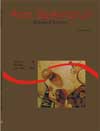<b>Arquitetura foliar de <em>Impatiens walleriana</em> Hook. f. (Balsaminaceae)</b> - DOI: 10.4025/actascibiolsci.v31i1.935
Resumo
A arquitetura foliar, definida como a organização tridimensional das folhas no caule, influencia a capacidade da planta em interceptar a luz solar. Este estudo investigou a arquitetura das folhas de Impatiens walleriana que ocorre nos subosques de Floresta Ombrófila Mista para avaliar se existe variação na arquitetura em relação à posição das folhas no eixo caulinar, identificar as características morfológicas que influenciam a sobreposição das folhas e, consequentemente, o processo de captura de luz. Foram coletados 30 indivíduos na mesma condição luminosa, num fragmento de Floresta Ombrófila Mista, Curitiba, Estado do Paraná. Largura, comprimento, espessura, área foliar, comprimento do pecíolo, ângulo foliar e ângulo de divergência foram mensurados. Os valores médios do comprimento do pecíolo e dos ângulos foliares e de divergência variaram significativamente com a posição foliar. Aparentemente, o auto-sombreamento foliar é minimizado pelo efeito sinérgico do ângulo de divergência, do ângulo foliar, da forma elíptica da lâmina e dos pecíolos longos, que, em conjunto, permitem que a maioria das folhas possa receber a luz difusa disponível no interior da floresta. Essas características morfológicas, juntamente com as estratégias reprodutivas, parecem influenciar o sucesso da espécie na colonização de subosques perturbados, substituindo a vegetação nativa.Downloads
DECLARAÇÃO DE ORIGINALIDADE E DIREITOS AUTORAIS
Declaro que o presente artigo é original, não tendo sido submetido à publicação em qualquer outro periódico nacional ou internacional, quer seja em parte ou em sua totalidade.
Os direitos autorais pertencem exclusivamente aos autores. Os direitos de licenciamento utilizados pelo periódico é a licença Creative Commons Attribution 4.0 (CC BY 4.0): são permitidos o compartilhamento (cópia e distribuição do material em qualqer meio ou formato) e adaptação (remix, transformação e criação de material a partir do conteúdo assim licenciado para quaisquer fins, inclusive comerciais.
Recomenda-se a leitura desse link para maiores informações sobre o tema: fornecimento de créditos e referências de forma correta, entre outros detalhes cruciais para uso adequado do material licenciado.












1.png)




3.png)













